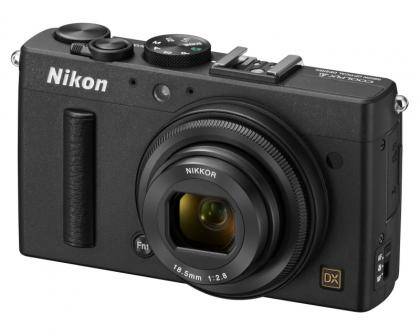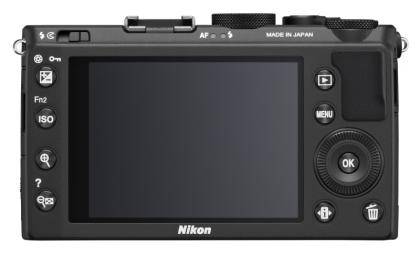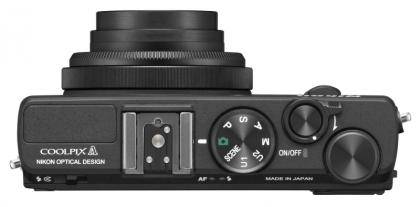Camera manufacturers aren't known for coming up with catchy names, but there's a growing trend to reduce the meaningless jumble of numbers and letters to a single character. So hot on the heels of the Canon EOS M and Canon PowerShot N , we have the Nikon Coolpix A.

The high price means there's no doubt that this is an enthusiasts' camera. The APS-C sensor – the same size that's used in most SLRs – and a prime (fixed-zoom) lens provide further confirmation. Fitting such a large sensor into a compact camera is no mean feat, and it's all the more impressive considering how small and light it is. Weighing in at 299g and measuring 40mm from front to back, it should fit into spacious trouser pockets. That's in marked contrast to other compact cameras with APS-C sensors, such as the Fujifilm X100S (445g, 59mm) and the Canon G1 X (534g, 75mm).
It looks just as luxurious as we'd expect at this price. Its blocky aluminium and magnesium alloy shell feels extremely robust, and there's just enough contour on the front and back to give a comfortable grip. We really appreciate the integrated lens cap, which is much more convenient than having to take the cap off and stick it in a pocket. The lack of a viewfinder is surprising considering the target market, though. An optional optical viewfinder (part code DF-CP1) costs around £250.

The metal buttons have a decisive click to them, and the various rotary controllers have just the right amount of resistance for precise operation. However, this camera is surprisingly reliant on its menus to give access to shooting functions. There are dedicated buttons for exposure compensation and ISO speed, plus a customisable Fn button on the front that we assigned to drive mode – all three are adjusted by holding down the button and spinning the command dial. The autofocus point is moved via the navigation pad but it trundles around the frame pretty slowly. There's no quick access to white balance, autofocus mode, video recording or the Auto ISO setting. Most of these can be accessed by pressing the i button and navigating the on-screen icons, but enabling and customising the Auto ISO function requires a trip to the main menu.
Nikon has managed to find room for a Help button. Pressing it reveals explanations and tips for the currently highlighted function, but some are trivially brief while others are long winded and hard to follow. Regardless, it seems odd to have a dedicated Help button on such an expensive camera that's unlikely to appeal to beginners.

We're surprised that it doesn't have a dedicated exposure compensation wheel, as many of its rivals do. To be fair, though, we're not sure where it would have fit. The lack of an HDR mode is less forgivable, seeing as it's included on Nikon's recent SLRs. The Coolpix A is compatible with Nikon flashguns and optional GPS and Wi-Fi units, but these are unwieldy accessories for such a small camera. We'd have preferred to have Wi-Fi built in. The 1/2,000s maximum shutter speed is unusually slow, and there's no neutral density (ND) filter to help out in excessively bright conditions. The 230-shot battery life is disappointing – we'd recommend spending £35 on a spare.
The lens specifications are a little underwhelming, too. Its f/2.8 maximum aperture isn't particularly bright, capturing half as much light as the Fujifilm X100S's f/2 lens. Unlike the Canon G1 X, there's no optical stabilisation. The 28mm (equivalent) focal length gives a wide-angle view that's fine for landscapes and cityscapes but isn't so suited to portraits. The 10cm macro mode is pretty good considering the large sensor, but in the normal autofocus mode, the lens refused to focus closer than 50cm. Annoyingly, the camera simply captured a blurry photo rather than refusing to shoot – Nikon's SLRs offer a choice of focus or shutter-release priority to avoid this problem.